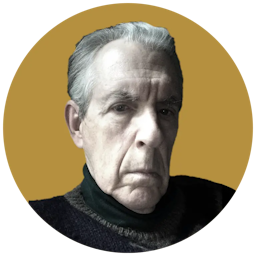A Book To Lose Sleep Over
‘Mapping the Darkness’ is a haunting portrayal of human misery but also of the determined triumphs of researchers who didn’t give a damn about the skepticism of colleagues.

‘Mapping the Darkness: The Visionary Scientists Who Unlocked the Mysteries of Sleep’
By Kenneth Miller
Hachette Books, 432 pages
This book might also be titled “The Biography of Sleep,” meaning not only a narrative of what happens when an individual is not awake — thought to be unimportant or inaccessible a hundred years ago — but also the story of four outsider scientists who made the study of sleep into the group biography Kenneth Miller so deftly delivers.
“On one level,” Mr. Miller explains, “Mapping the Darkness” is “the saga of a few brilliant individuals who chanced upon experiences, mentors, allies, professional networks, and historical conditions that helped them make the most of their talents. On another, it’s a tale of passionate curiosity, fierce audacity, and near-superhuman perseverance.”
Trouble sleeping used be thought of as just some kind of mental disturbance or peculiar physical ailment, until, in a kind of chain reaction, Nathaniel Kleitman, Eugene Aserinsky, William Dement, and Mary Carskadon made it possible for Mr. Miller to define sleep as a “master regulator: of memory, mood, and learning; of our hormones, circulatory systems, and immune defenses; of childhood development and the ravages of aging.”
Here’s the bad news: “Sooner or later, sleep troubles us all.” Now, Mr. Miller reports, “more than eighty sleep disorders” have been identified, including “exploding head syndrome (characterized by terrifying blasts of hallucinated noise) or rapid eye movement sleep behavior disorder (whose victims act out their nightmares, sometimes injuring or even killing their bedmates).” Statistics and stories rapidly proliferate in Mr. Miller’s unstoppable horror show: “Around seventy million Americans suffer from such miseries.”
One of Mr. Miller’s case studies, Joe Borelli, was entirely undone by sleeplessness, leading to inability to concentrate and a failed marriage — to mention just two consequences of his malady. Some days, he could not remember how to do the simplest tasks, not realizing that years of sleeping on his stomach to ease his breathing resulted in spinal arthritis.
When Borelli’s sleep problems were finally diagnosed correctly, what helped was not just the advances in sleep science, but a doctor who listened carefully to his patient and insisted on a course of therapy — tried before, but at the wrong pitch of effort.
Mr. Miller’s story, after introducing the Borelli case study, begins in the 1920s with Nathaniel Kleitman, an immigrant who established the first sleep laboratory, at the University Chicago. Like one of those mad scientists in the movies, he experimented on himself. His disciple, Eugene Aserinsky, discovered REM sleep and the functioning of the dreaming brain, then William Dement, who was also a jazz bassist, developed the right medication for certain disorders, and Mary Carskadon, finally took teenagers seriously and explained the devastating impact of sleep deprivation.
“Mapping the Darkness” is a book to lose sleep over. It is a haunting portrayal of human misery but also of the determined triumphs of researchers who didn’t give a damn about the skepticism of colleagues.
Mr. Miller’s book treats sleep as both an individual problem and one that is connected to the lives of so many others who wonder at night why they can’t sleep. Biology as biography is one way to describe ”Mapping the Darkness.” Insomnia, sleep apnea, and narcolepsy — to name just three afflictions that get their due — become more understandable.
Of the four sleep scientists, only Ms. Carskadon is alive, and fortunately she provided Mr. Miller with “many hours of interviews.” It shows. So much of this biography reads like a group effort, with many voices filtering into Mr. Miller’s acute reports of what he has learned.
“Mapping the Darkness” demonstrates that there is nothing inevitable about what is known about sleep now. It very much depended on the characters in this book, who are full of sly persistence — sometimes in the laboratory, among fellow scientists, and sometimes out in the policy arena, where Ms. Carskadon made her impact.
Mr. Miller’s story is not simple, but then understanding what happens in sleep is not simple, either. Without the creation of the characters who did the research, I’m not sure the science of what they discovered could be conveyed to those who specialize only in their own sleep.
For some matters, only biography will suffice.
Mr. Rollyson writes about group biography in “Biography: A User’s Guide.”

